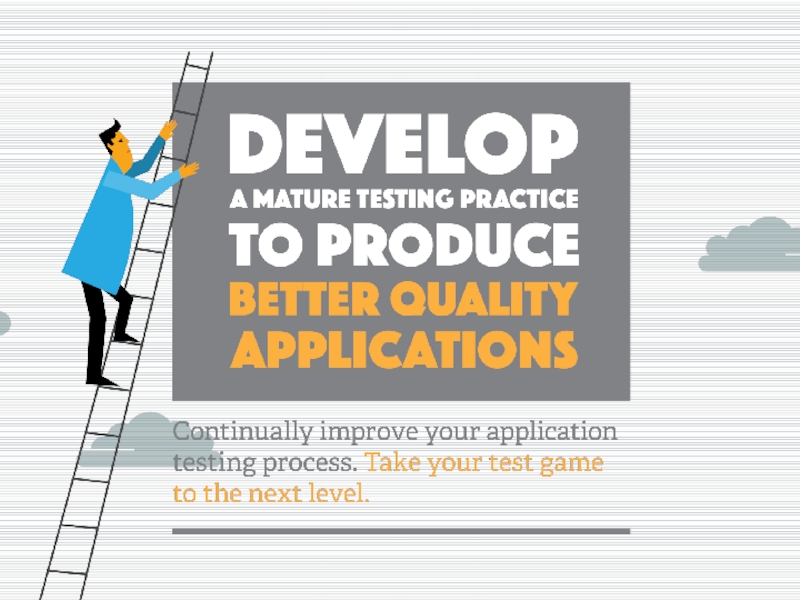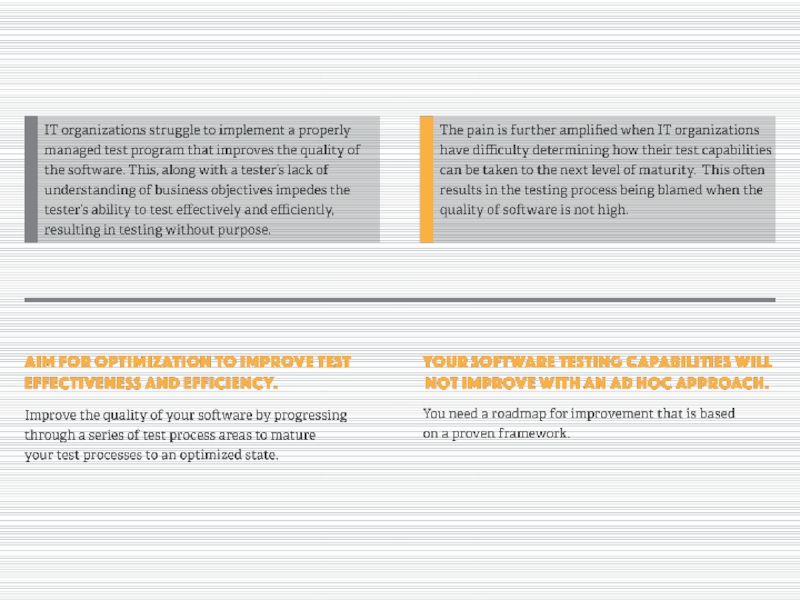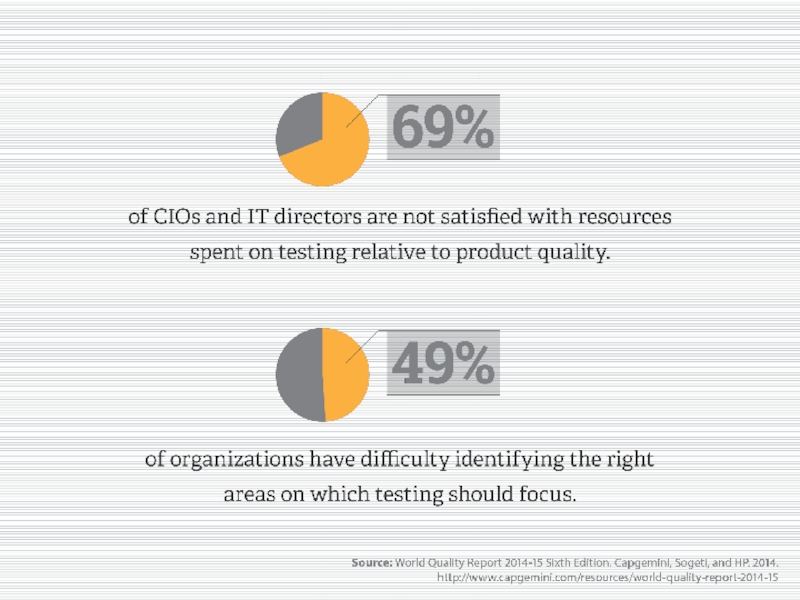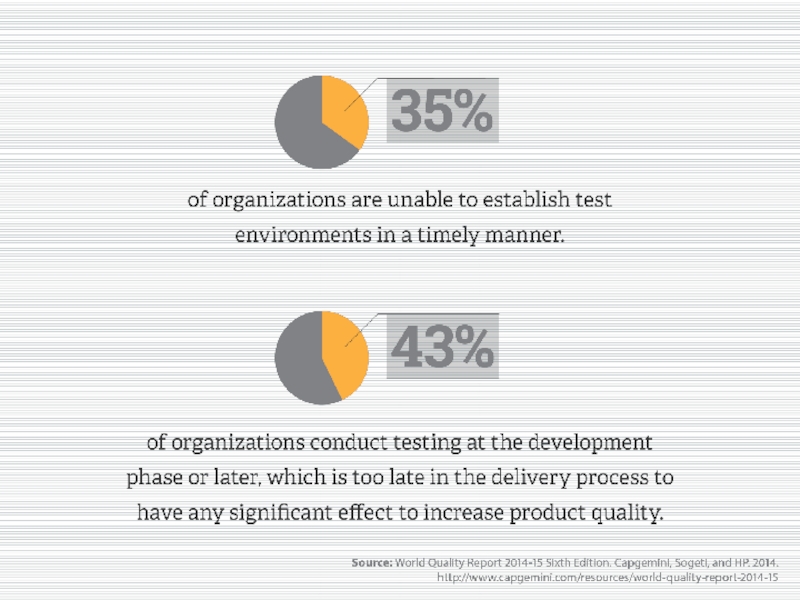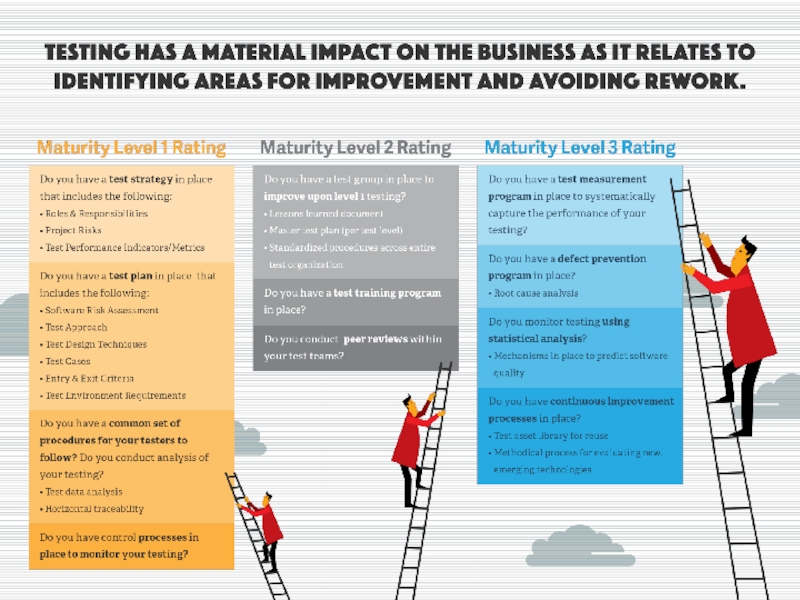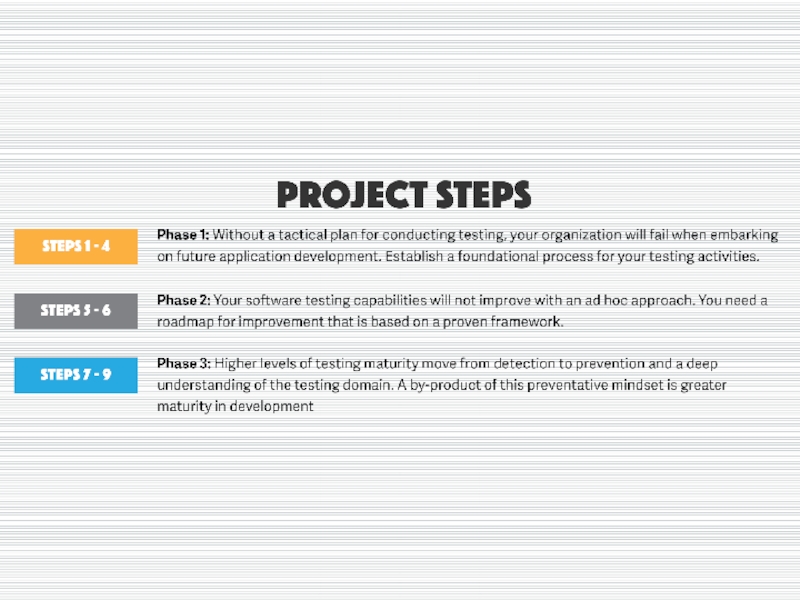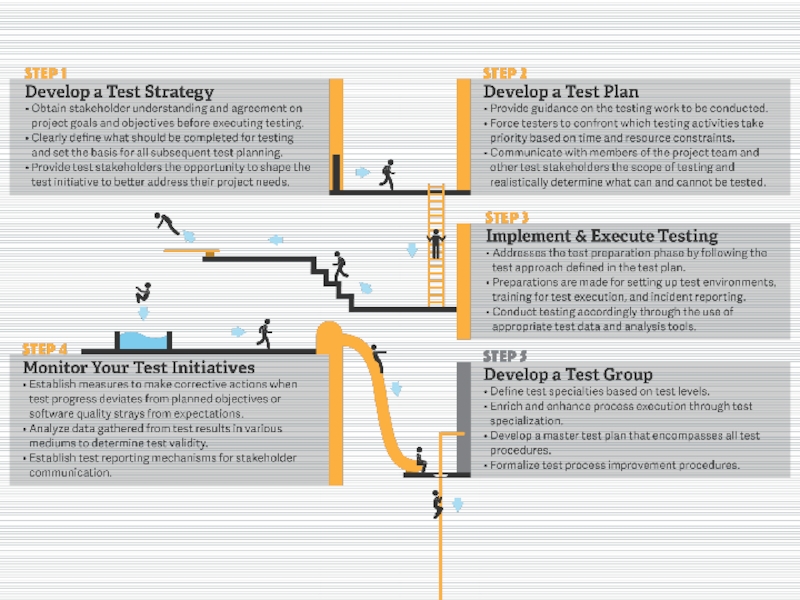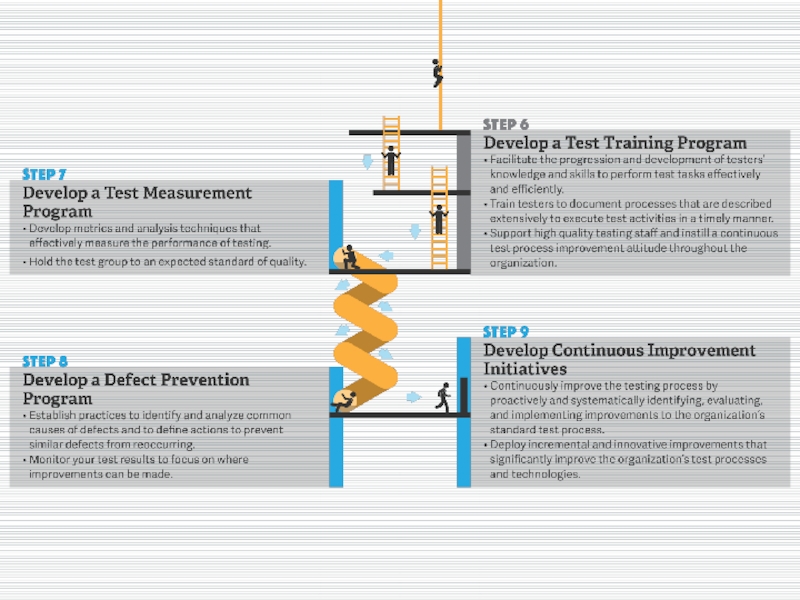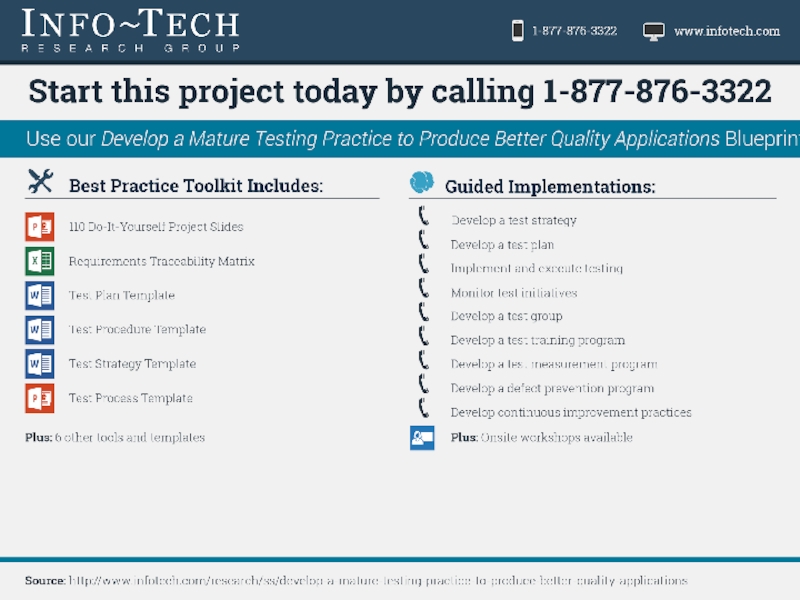your application testing process. Take your test game to the next level.
IT organizations struggle to implement a properly managed test program which improves the quality of the software. This, along with a tester’s lack of understanding for business objectives impedes the tester’s ability to test effectively and efficiently, resulting in testing without purpose.
The pain is further amplified when IT organizations have difficulty determining how their test capabilities can be taken to the next level of maturity. This often results in testing being blamed when the quality of software is not high quality.
· Aim for optimization to improve test effectiveness and efficiency.
Improve the quality of your software by progressing through a series of test process areas to mature your test processes to an optimized state.
· Your software testing capabilities will not improve with an ad hoc approach. You need a roadmap for improvement that is based on a proven framework.
· Source: World Quality Report 2014-15 Sixth Edition. Capgemini, Sogeti, and HP. 2014. http://www.capgemini.com/resources/world-quality-report-2014-15.
o 69% of CIOs and IT directors are not satisfied with resources spent on testing relative to product quality.
o 49% of organizations have difficulty identifying the right areas on which test should focus.
o 35% of organizations are unable to establish test environments in a timely manner.
o 43% of organizations have their testing involved at the development phase or later, which is too late in the delivery process to have any significant effect to increase product quality.
· Testing has a material impact on the business as it relates to identifying areas for improvement and avoiding rework.
Phase 1: Without a tactical plan for conducting testing, your organization will fail when embarking on future application development. Establish a foundational processes for your testing activities.
Phase 2: Your software testing capabilities will not improve with an ad hoc approach. You need a roadmap for improvement that is based on a proven framework.
Phase 3: Higher levels of testing maturity move from detection to prevention and a deep understanding of the testing domain. A by-product of this preventative mindset is greater maturity in development.
- Главная
- Разное
- Дизайн
- Бизнес и предпринимательство
- Аналитика
- Образование
- Развлечения
- Красота и здоровье
- Финансы
- Государство
- Путешествия
- Спорт
- Недвижимость
- Армия
- Графика
- Культурология
- Еда и кулинария
- Лингвистика
- Английский язык
- Астрономия
- Алгебра
- Биология
- География
- Детские презентации
- Информатика
- История
- Литература
- Маркетинг
- Математика
- Медицина
- Менеджмент
- Музыка
- МХК
- Немецкий язык
- ОБЖ
- Обществознание
- Окружающий мир
- Педагогика
- Русский язык
- Технология
- Физика
- Философия
- Химия
- Шаблоны, картинки для презентаций
- Экология
- Экономика
- Юриспруденция
